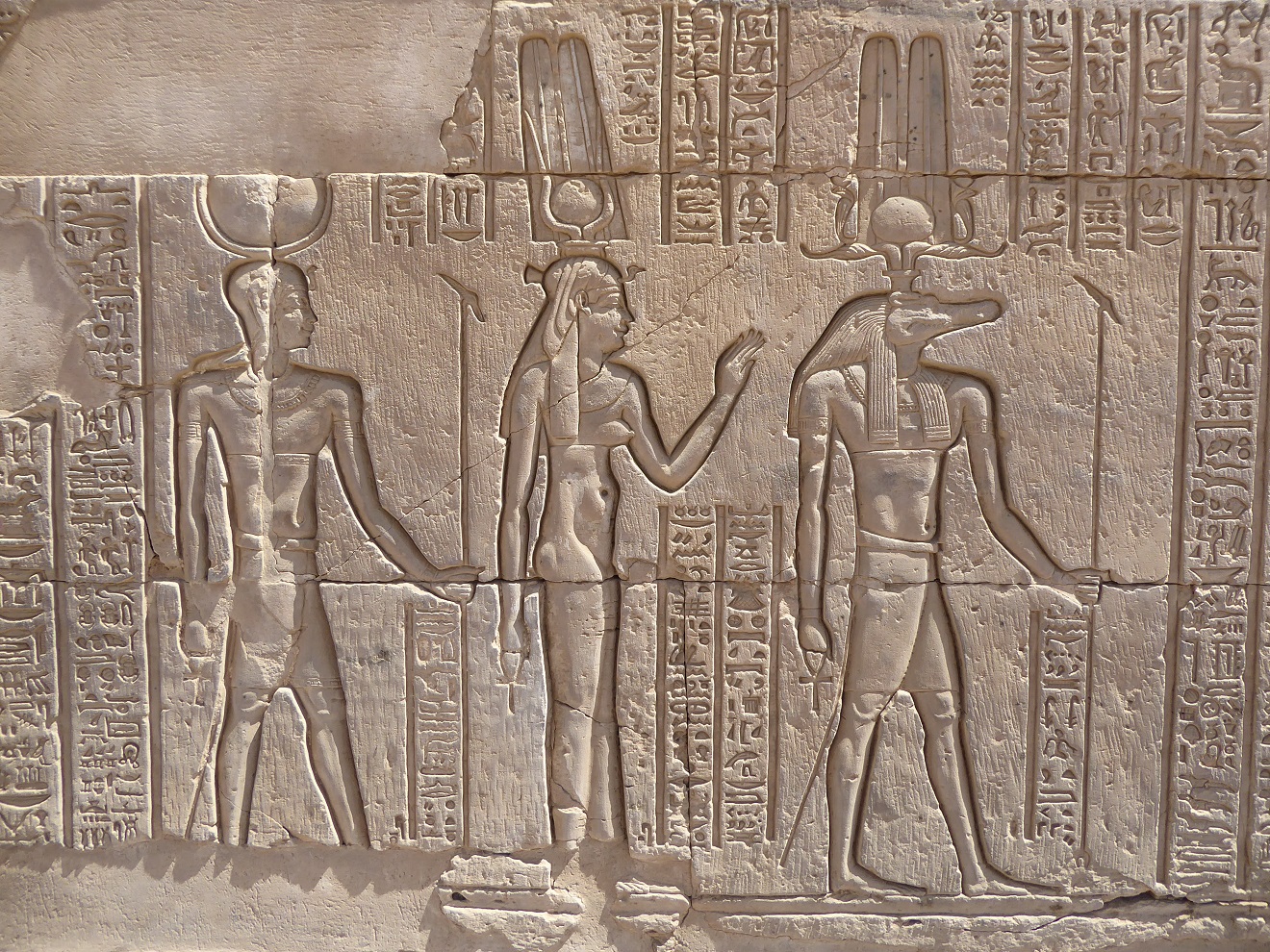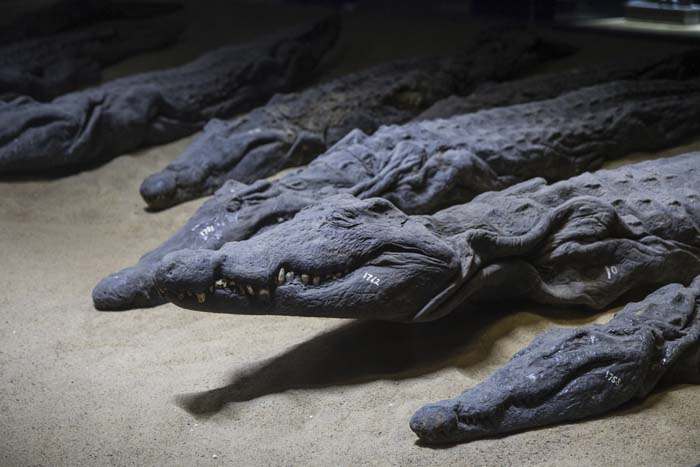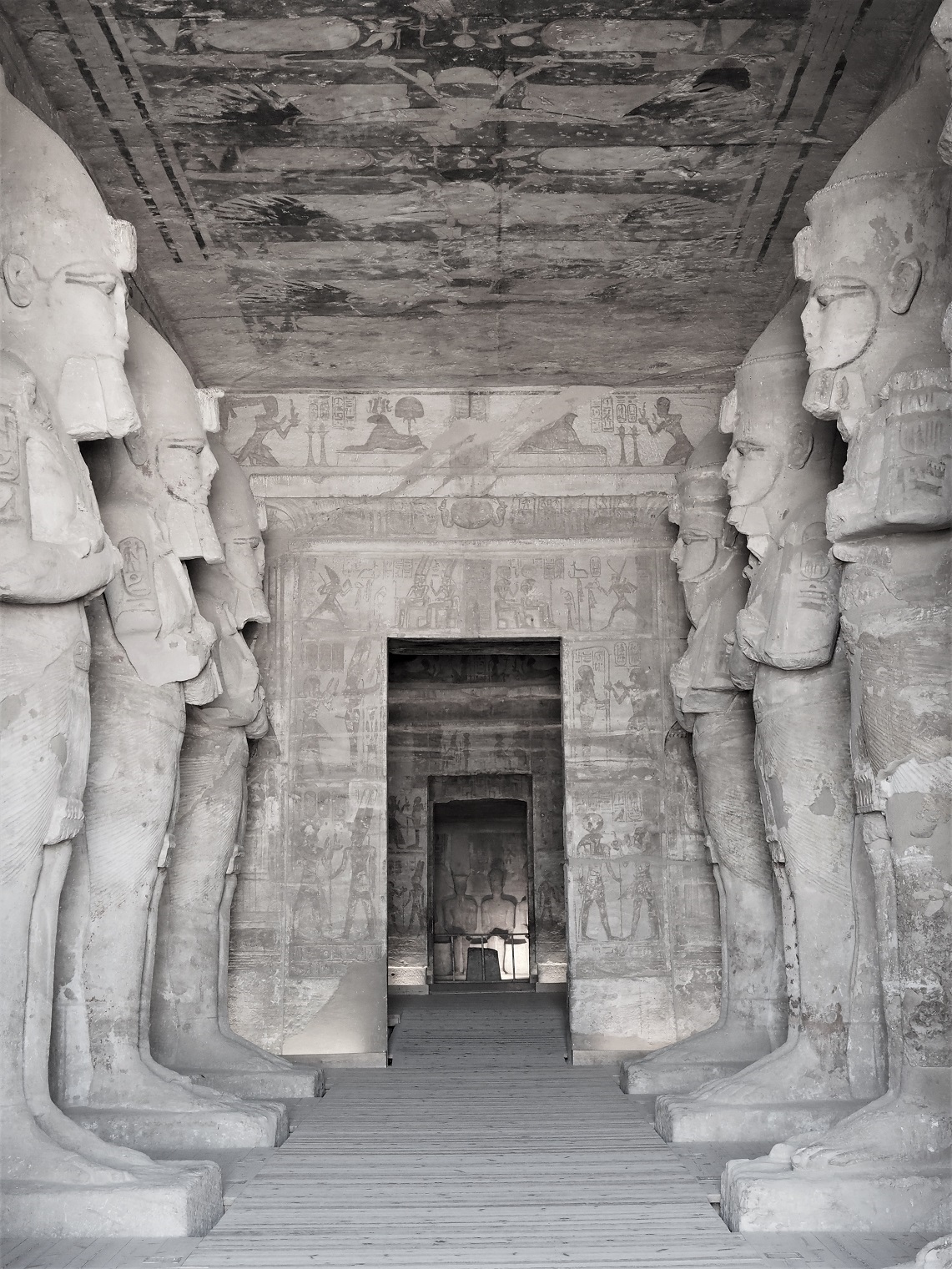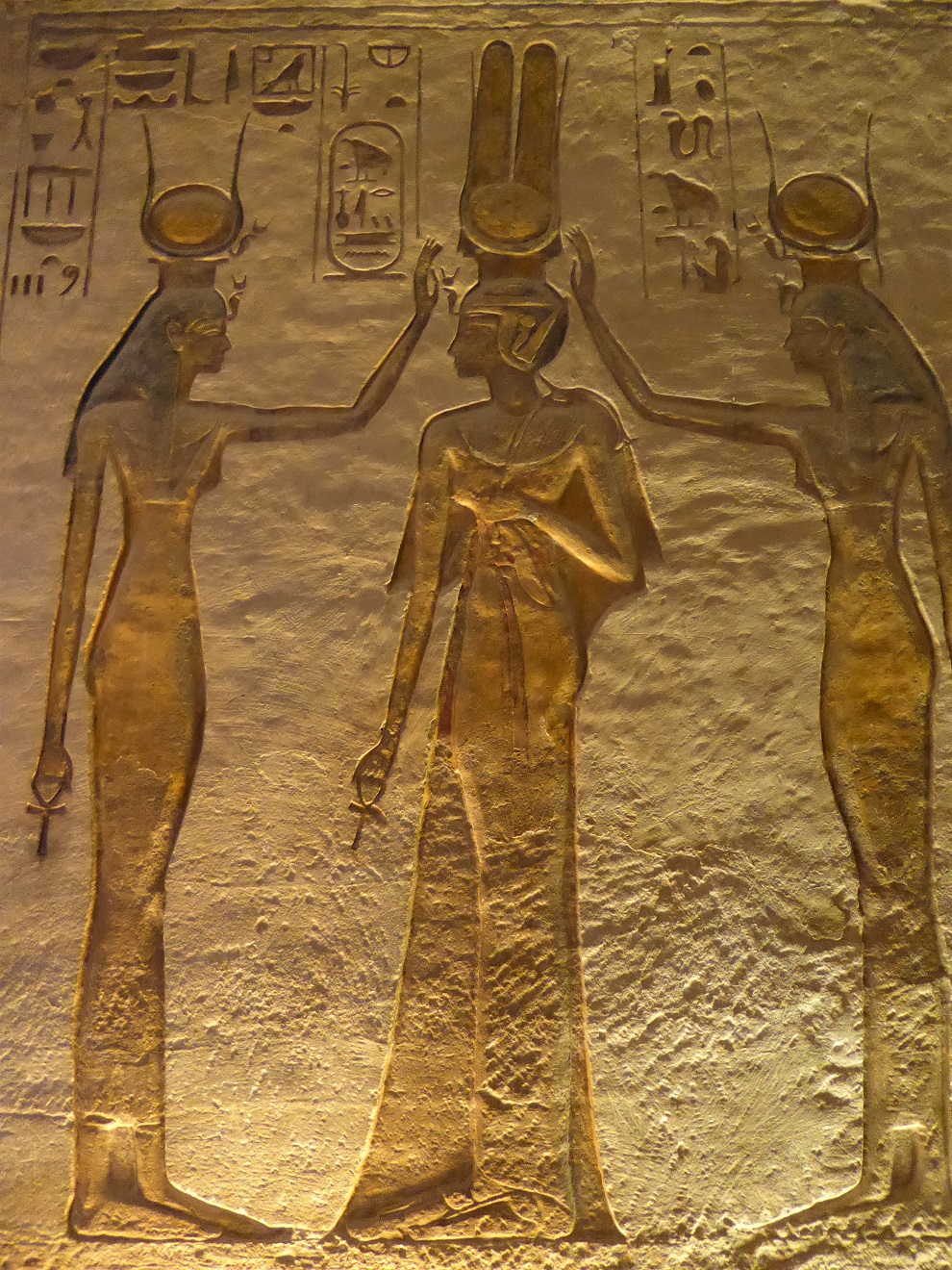It is impossible to see all the tombs, treasures, and temples of Egypt on a 30 day visa and still have time for sleep. We did our best, though. We leave the country with tired feet but happy hearts.
While sitting at the airport mulling it all over we decided that what we liked best about our time in Egypt was walking around in the ancient temples. This naturally led us to a discussion about which temple we liked best. And that has led me to this overlong blog post.
Archaeologists have unearthed more than 30 temples in Egypt. We only made it to nine. We were awestruck by every one of them and hope that you view this list for what it is: a reflection of how the temples kept kicking up the wow factor.
9. Memorial Temple of Hatshepsut (Valley of the Kings)
I have harbored a fascination bordering on obsession for Queen Hatshepsut since my early teens. She was one of my heroes. She became Queen Regent when her husband (and also half-brother/cousin, ew), King Tuthmosis II, suddenly died. The king’s two year-old son, Tuthmosis III (from a secondary wife), was too young to take the throne. Since the secondary wife was of too low a class to be an acceptable regent, Hatshepsut stepped in. After two years she was crowned as a full pharaoh. No one knows why or how she pulled it off. She ruled for more than 20 years and by all accounts did a great job.
Her memorial temple was once a grand affair, with gardens and statues and temples to Amun Ra and Hathor. It’s perfect symmetry is beautiful to behold, and made all the more impressive when you realize it was built more than 1000 years before the Parthenon.

When Tuthmosis III finally took throne he set about having all mention of Hatshepsut erased. (Clever archaeologists have been able to piece back together certain hieroglyphs mentioning her, and her name was never removed from her tomb). Many years later, the “heretic” King Akenhaten decided that the state god would be Aten, not Ra, and had the temples to Amun Ra defaced. Then the Christians showed up and hacked away all the faces of Hathor and any other face they could find. This temple has been through a lot.
By the way, the mummies of Hatshepsut and the Tuthmosii are on display at the Egyptian Museum in Cairo. She is described in the museum as “an obese woman with bad teeth.” So, yeah, we’re totally body shaming a woman several thousands of years after her death. Grrr.
Getting there: Stay at a hotel in Luxor and hire a driver for the day. If you’re staying on the west bank it’s as easy as walking outside and talking to the first guy who offers you a taxi. If you’re on the east bank, take the public ferry for £1 and talk to a driver on the other side. The ferry will take 10 minutes. Driving from the east to the west bank will take 40 minutes. Settle on the price first. We paid £250 Egyptian, which was $13 US, and also went to the Valley of the Kings and the Tombs of the Nobles.
8. Luxor (Luxor)
So, it turns out that the ancient Egyptians never called this place Luxor. It got its name from the military fort that the Romans put up around it, which the locals called Al-Uqsur (The Fortifications). Over time everyone just started calling Luxor. To the ancient Egyptians it was “ipet resyt,” or the Southern Sanctuary of Thebes.

The first building on this site was a triple barque shrine built by Queen Hatshepsut, where they’d stash the litters that carried statues of the gods to various locations for rituals and celebrations. Tuthmosis III, in his zeal for eradicating his step-mom’s legacy, had the shrine rededicated to Amun, Mut, and Khonsu. Later kings, including Amenhotep III, Tutankhamun, Ramses II, and Alexander the Great would expand the site, adding bigger and more ostentatious statues to the temple.
It’s a neat place, especially at dusk and in the evening when it’s lit up. But for all the attention this temple gets it’s a bit of a mess. Multiple architects, plus the fact that it was filled with garbage for a number of years before being excavated means its in rough shape. It’s fascinating to walk around in there, though. The sheer history on display in one place is staggering.
Getting there: It’s on the east bank of the Nile. You can’t miss it. Our hotel was on the west bank so we took the ferry over and walked. If your hotel is farther out there are taxis and horse-drawn carriages everywhere. Again, settle on a price first and don’t back down if the driver tries to change the price when you get there. We found that some drivers would agree to a £20 ride and then double it, claiming it was £20 per person. No. Just, no.
7. The Temple of Isis (Agilika Island)
The cult of Isis was active from the 7th century BC all the way through AD 550, making for a solid 1,100 years of worship. Isis, goddess of health, marriage, and wisdom had staying power. There is even an imposing sign at the entrance to the temple that explicitly forbids the performance of rituals in the temple. New Age is the Old Age, I guess.

What made this temple extraordinary for us was its location. The temple sits on Agilika Island in the Nile River, but it didn’t always. It was originally constructed on the nearby Philae Island, but after a dam was built in 1902 it was flooded for six months out of the year. A new dam built in the 1960s threatened to drown it completely, so UNESCO came to the rescue and moved the temple, brick by brick, to higher ground. Amazing.

The temple has all the right stuff – grandeur, beauty, and mythos. The Christians came through and scratched away all the faces from the Egyptian gods, then the Muslims came through and scratched away the Christian iconography. Yet its original majesty is still evident.

Getting there: This is an easy half-day trip from Aswan. A taxi will drop you at the boat dock where you’ll by your ticket for the temple. Another ticket is required for the boat, and you’ll have to pay the boatman directly. It’s a lot less money if you’re in a large group (but then you’re bound to the group’s timing for coming back). The boatman wanted £200 for the round trip. We were only able to talk him down to £150, or about $8 US.
6. The Temple of Seti I (Abydos)
This was the only temple we saw that was dedicated to all six major gods – Osiris, Isis, Horus, Amun-Ra, Ra-Horakhty, and Ptah. All the images and hieroglyphs relate to the gods in some way, either worshiping them or receiving their blessings. After a rather plain looking exterior we were ushered into a series of hypostyle halls that were staggering in size.

The Egyptians have put a lot into restoring this temple and it’s one of the most complete around. It’s dark inside, but we loved wandering through the place. There are seven small sanctuaries that are attached to the hypostyle hall and are each dedicated to a god. The original color on the reliefs was just stunning.

Seti I’s temple is high on our list because of its size and the exquisiteness of the hieroglyphs, but it doesn’t break into our top five because of how hard it was to get there.
Getting there: It’s a long drive, you guys. We hired a driver for the day to take us to both Abydos and Dendera (we negotiated £650 but ended up giving him £800 because of what you’ll read next). The trip to Abydos was three hours. Our driver took the highway, which was much faster than the local road, but troublesome if you’re from the U.S., which we are. Our driver therefore informed us that we were Germans. At every military checkpoint (there were at least 10) he would tell the guys with the rifles that he was transporting Germans and they’d wave us along. Apparently there’s a lot of paperwork involved if you’re an American taking the highway; but the local road adds two hours to the journey.
5. Kom Ombo (Kom Ombo)
This temple is a great deal smaller than the other temples in our top five, but what it lacks in size it makes up for in mummified crocodiles. Lots of ’em.

The temple is dedicated to the crocodile god Sobek and his brother, Horus the Elder. Crocodiles were sacred to the ancient Egyptians for a lot of reasons. They were deadly, sure, but they also managed to lay their eggs above the flood line every year, so everyone thought they could predict how high the flood would be.

The priests at the Kom Ombo temple would look for crocodiles with specific markings and a then declare that beast to be the living embodiment of Sobek on Earth. The crocodile would then live inside the temple.

When the temple croc died they mummified it. The crocodile mummy museum is on site and admission is included in the price of the entrance ticket. There are a dozen or more crocodile mummies on display there.

Getting there: This is a fine half-day venture from Aswan. Ask a taxi driver to take you to the Aswan bus station, then just keep saying, “Kom Ombo?” until someone points to a mini-bus. Get in that mini-bus. About half way there people will start passing money up to the driver. Watch how much and copy them (it was £5 each when we went). The driver may try to cheat you, but the other passengers won’t. The bus will drop you off in town and you can either walk (about 20-25 minutes) or take a tuk-tuk to the temple. Reverse these instructions to get back.
4. The Temple of Ramses III (Mendinat Habu/Luxor)
Ok, now this place was stunning. All the guidebooks and tour guides call it Mendinat Habu, which is not only a terrible name, but isn’t even descriptive of what’s there. Mendinat Habu is the name of the medieval town that sprung up around the temple after the Christians took over and turned it into a monastery. A better, more descriptive name is the Temple of Ramses III. It has such a bad name that no one goes there. The upside is that we had the place to ourselves.

The whole temple complex is dedicated to the exploits of Ramses III, including his prowess in battle and his victories over foreign enemies. I learned that losing a battle to the Egyptians meant losing your life and your dignity:

I also learned that in ancient Egyptian culture your name was your link to immortality. As long as someone could read your name you would live forever, but carvings in stone wear down over time. The solution was to carve really, really deeply.

If you’re in Luxor anyway do not miss seeing this temple. It is a beast of a place to walk around in, but so worth it.
Getting there: A taxi from the west bank of Luxor is your best bet. Tickets to the temple are picked up at the same place you get tickets for the Tombs of the Nobles, so consider pairing the two.
3. Karnak (Luxor)
We should have visited this temple twice in order to take it all in. The main structure is the Amun Temple Enclosure, which is a sprawling ode to the power of Egypt and the egos of the pharaohs. It was by far the busiest place we went to, including the pyramids.
There are temples and pylons and barque sanctuaries and a festival hall and a sacred lake…it’s massive. The shining stars are the Great Obelisk of Hatshepsut and the Great Hypostyle Hall.

The Great Hypostyle hall is impossible to capture in a single image. The 134 stone columns are massive, covered in hieroglyphs, and the whole of the place is big enough to fit St. Peter’s Basilica in Rome and St. Paul’s Cathedral in London.

There is so much to see here it can be overwhelming. If I had it to do over again we’d have come in the early morning, taken a break for lunch and a nap, and then come back for more in the late afternoon.

Getting there: There was once a three kilometer road, the Avenue of the Sphinxes, that connected Karnak to Luxor. It isn’t a complete path any longer, but you can still make the trip on foot. We decided on a taxi for £10 (roughly $.60 US).
2. Great Temple of Ramses II (Abu Simbel)
Our pictures aren’t going to to this place justice. The temple sits on the banks of what is now Lake Nasser. It was carved directly out of the mountain more than 3,000 years ago and must have been an imposing sight for travelers journeying down the Nile.

We were the only two tourists wandering around that day, which was special and also a little spooky. The halls that once resonated with the chants of the priests and the bustle of an active temple was silent save for the tweeting of a few finches.
The engravings and statues are remarkably intact. I’m guessing the Christians didn’t make it this far down the Nile.


A smaller temple dedicated to Hathor, goddess of joy, feminine love, and motherhood, sits to the right of the Great Temple. It’s a much more intimate affair and I found myself quite relaxed inside. The temple is also dedicated to Ramses’ chief wife, Queen Nefertari.


These temples were part of the UNESCO operation that saved a number of structures from being flooded when Egypt built the Aswan High Dam.
Getting there: There are caravans for tourists (complete with armed escorts) that leave from Aswan at the ungodly hour of 4:30 am every day. Given how few tourists are in Egypt these days we took our chances on the 8:00 am local bus (they’ll only hold four seats for tourists). We got tickets easily. The drive is four hours and the only return bus is at 1:00 pm. We missed that 1:00 pm bus. After some excited exchanges with the local tourist police we were placed in a mini-bus for £50 a piece (about $2.70).
1. The Temple of Dendera (Qena)
We struggled with the ordering of these last three temples, but eventually agreed that our favorite was Dendera. It’s like walking into a dream.

The present temple is comparatively new, having been completed around 350 BC. It was dedicated to Hathor, who was overshadowed by Isis, but she had just as strong of a cult following and for almost as long. The temple was an important administrative center and boasted a laboratory and a treasury.

There are multiple floors, including a necropolis, and sanctuaries in the upstairs rooms. It’s such a wonderful temple and we wandered around for quite a while. I’ll be impressed with ancient builders, sculptors, and painters for the rest of my life.
Getting there: Some Nile cruises make a stop here and it’s possible to get a mini-bus, but the easiest way is by private taxi. Tell the first guy who asks if you need a taxi that you want to go to Dendera and he’ll know who to send you to. We paired this temple with Abydos, but recommend just seeing Dendera if you’re short on time.
Awesome blog and pictures! Goodness, what an adventure!
LikeLike
Jealousy. Pure and simple.
LikeLike
We saw most, but not all, of these in 2013. Your pictures and descriptions are excellent. Thanks for the memories.
LikeLike
[…] was name recognition. That’s why they chiseled the pharaohs’ names so deeply into the walls of the temples. In some cases the carvings were so deep I could have slid the full length of my hand inside them. […]
LikeLike